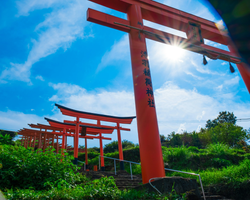Tracing Sacred Footsteps: A Pilgrimage to the Monasteries of Shangri-La

In a world bustling with rapid advancements and ceaseless urban expansion, the thirst for spiritual refuge and authenticity lingers persistently. For those in Shanghai yearning for such an escape, the monasteries of Shangri-La in Tibet offer not just an extraordinary pilgrimage but a journey back in time, where serenity meets heritage. Despite their remote locations, these sacred sanctuaries hold timeless spiritual and cultural treasures, with an unforgettable experience of mindful travel. This article will guide you in exploring the understated yet profound beauty of these monasteries and share sustainable travel tips for your transformative journey.
Journey to Spiritual Tranquility
Shangri-La, once known as Zhongdian, is renowned for its breathtaking landscapes"—a harmonious blend of snow-capped peaks, sweeping meadows, and lush forests. The monasteries that grace this enchanted land are more than just architectural wonders; they are active spiritual centers that embody centuries of rich Tibetan Buddhist tradition.

Songzanlin Monastery, often hailed as the 'Little Potala Palace,' is the largest Tibetan Buddhist monastery in the Yunnan Province. Here, visitors witness monks clad in traditional robes engaging in chants and rituals, creating an atmosphere of profound peace and reflection. This monastery is not just a tourist destination but a living monastic community where one can experience daily life closely intertwined with spiritual practice.
Eco-Conscious Travel Tips
While the allure of Shangri-La's monasteries is undeniable, it's imperative to approach this journey with eco-consciousness. Adopting sustainable travel practices ensures the preservation of this precious environment and its cultural integrity for future generations. Here are some practical tips:
- Respectful Exploration: Always follow the monastery rules and be mindful of local customs. Photography is often restricted inside monastery halls, so ensure you seek permission before capturing images.
- Pack Wisely: Bring reusable water bottles and bags to minimize plastic waste. Shangri-La's pristine environment can be preserved by reducing the single-use plastics often littering tourist sites.
- Support Local Economies: Purchase souvenirs directly from local artisans and dine at small eateries to support the local economy. This practice enriches your experience with authentic tastes and helps sustain local livelihoods.
- Mindful Trekking: If hiking through the scenic trails to the monasteries, stay on marked paths to protect the native flora and fauna. Also, be conscious of your noise level to maintain the sanctity and peace of the area.
Embracing Tibetan Culture
Beyond the spiritual allure, Shangri-La offers a vibrant tapestry of Tibetan culture waiting to be discovered. Engage with the local communities and partake in traditional festivals that mirror their rich heritage and beliefs. From the dynamic dances during the Tibetan New Year to the vibrant colors of local art, every facet offers a glimpse into a way of life intrinsically connected to nature and spirituality.

Savor traditional Tibetan cuisine, characterized by staple ingredients such as barley and yak, offering both nourishment and insight into the region's sustenance techniques honed over centuries. When you indulge in these cultural experiences, you contribute to preserving the intangible heritage of the Tibetan people.
Conclusion
The journey to the monasteries of Shangri-La is a passage into a world where spirituality and nature coexist in unison. For residents of bustling Shanghai, this pilgrimage offers a momentary escape from urbanity, providing insights into a heritage that values harmony, compassion, and balance. Embracing eco-friendly travel practices ensures that as we trace these sacred footsteps, we do so with reverence and responsibility. A venture into this spiritual heartland promises not only scenic beauty but also a transformative journey—a deeper connection to oneself and the world.







